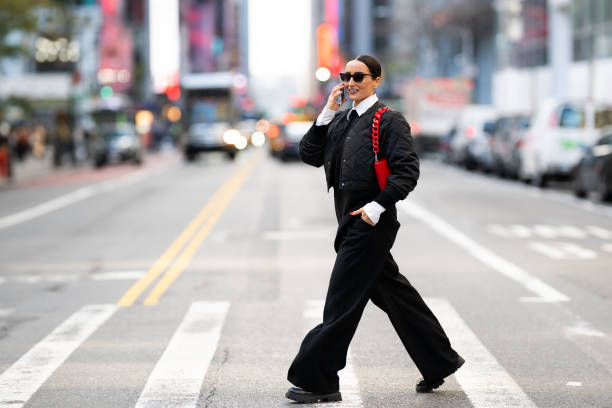The fashion industry is on the brink of a transformative era, driven by technological advancements, sustainability concerns, and evolving consumer preferences. This article explores the main trends and innovations set to shape the future of fashion.
Technological Integration in Fashion

Technology is poised to revolutionize the fashion industry with innovations such as virtual try-ons, AI-powered design, and blockchain for supply chain transparency. Virtual try-ons allow consumers to see how clothes will fit and look without physically trying them on, thereby enhancing the online shopping experience and reducing returns. AI-powered design tools can assist designers by predicting fashion trends and optimizing designs for different body types, potentially increasing creativity and efficiency. Blockchain, on the other hand, ensures transparency in the supply chain, allowing consumers to trace the origin and journey of their garments, thus fostering trust and accountability.
Sustainability and Ethical Fashion
The future of fashion is inevitably linked to sustainability as consumers become more environmentally conscious. Brands are increasingly committed to adopting eco-friendly practices such as using recycled materials, reducing water consumption, and minimizing waste. Ethical fashion also encompasses fair labor practices, ensuring that workers are paid fair wages and work in safe conditions. The rise of circular fashion, which encourages the reuse, recycling, and upcycling of garments, is a testament to the industry’s shift towards sustainability. This change is not just a trend but a necessary evolution to address the growing environmental impact of fashion.
Personalization and Customization
Personalization and customization are set to redefine consumer experiences in fashion. With advancements in data analytics and machine learning, brands can offer personalized recommendations, tailoring the shopping experience to individual preferences and behaviors. Customized clothing options are also becoming more prevalent, allowing consumers to design their own clothes or modify existing designs to suit their tastes. This shift towards personalization not only enhances consumer satisfaction but also reduces overproduction and waste, as garments are made to order rather than mass-produced.
The Rise of Digital Fashion
Digital fashion is an emerging trend that blurs the boundaries between the physical and digital worlds. Digital garments, which exist solely in the virtual realm, are gaining popularity, especially among gamers and social media influencers. These digital outfits can be “”worn”” in virtual environments, on social media profiles, or even in augmented reality experiences. Digital fashion offers a sustainable alternative to physical clothing, as it eliminates the need for raw materials and reduces the carbon footprint associated with production. As technology advances, we can expect digital fashion to become more sophisticated and widely accepted.
Fashion and Inclusivity
Inclusivity is becoming a cornerstone of the future of fashion, with brands recognizing the importance of catering to diverse body types, genders, and ethnicities. This shift is reflected in the increased availability of plus-size, adaptive, and gender-neutral clothing lines. Runways and marketing campaigns are also showcasing a broader range of models, challenging traditional beauty standards and promoting body positivity. Inclusivity in fashion not only reflects societal changes but also opens up new market opportunities for brands willing to embrace diversity and authenticity.
Conclusion
The future of fashion is dynamic and multifaceted, driven by technological advancements, sustainability initiatives, personalization, digital innovations, and inclusivity. As we move forward, these trends and innovations will continue to reshape the industry, creating new opportunities and challenges for brands and consumers alike. Embracing these changes will not only enhance consumer experiences but also promote a more ethical and sustainable fashion industry.
FAQs
What is digital fashion?
Digital fashion refers to garments that exist only in the virtual realm. These digital outfits can be worn in virtual environments, on social media profiles, or in augmented reality experiences, offering a sustainable alternative to physical clothing.
How is technology changing the fashion industry?
Technology is revolutionizing fashion through innovations like virtual try-ons, AI-powered design, and blockchain for supply chain transparency. These advancements enhance the shopping experience, increase design efficiency, and foster trust and accountability.
What is circular fashion?
Circular fashion encourages the reuse, recycling, and upcycling of garments to minimize waste and environmental impact. It promotes sustainable practices and helps reduce the industry’s carbon footprint.
Why is inclusivity important in fashion?
Inclusivity is crucial as it reflects societal changes and caters to diverse consumer needs. It promotes body positivity, challenges traditional beauty standards, and opens up new market opportunities for brands embracing diversity.
What are some sustainable practices in fashion?
Sustainable practices in fashion include using recycled materials, reducing water consumption, minimizing waste, and ensuring fair labor practices. Brands are also adopting circular fashion principles to promote environmental responsibility.





